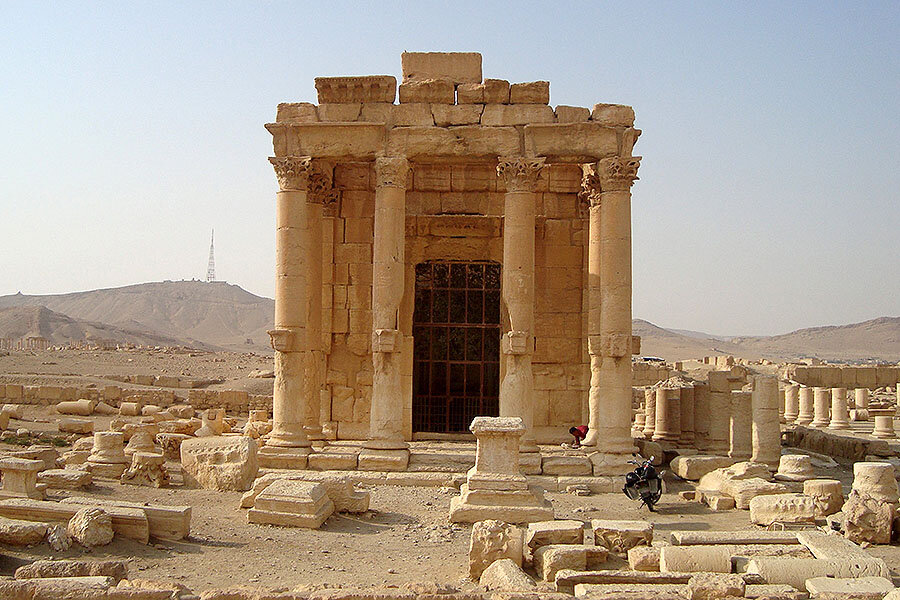Why is ISIS blowing up history?
Loading...
Last May, as Islamic State (IS) fighters swept into Palmyra, Syria, a UNESCO World Heritage site, they promised to protect the city’s emblematic ruins, a glimpse into Roman-era history. Archaeologists, who spent years miserably watching as war and terrorism took their toll on the Middle East’s artifacts, breathed a sigh of relief.
The promise was short-lived. In the past few weeks, IS has gone on one of their most devastating sprees of destruction, demolishing several of Palmyra’s 2,000-year-old temples and tombs.
The violence is aimed not just at artifacts, but people, too. On Aug. 18, they gruesomely executed Palmyra’s retired chief of antiquities Khalid al-Asaad after interrogating him about valuable artifacts. A nearby Roman amphitheater, although still standing, was used as the dramatic backdrop to film other executions.
Islamic State is well known for its violence against people who stand in their way, or disagree with the group’s strict beliefs. But why has it become equally well known for demolishing silent, ancient, and very valuable ruins across Iraq and Syria, artifacts from long-abandoned faiths?
The simplest explanation may be shock value. UNESCO has called the destruction of sites like Palmyra an “intolerable crime against civilization,” and the attention its videos inevitably draw serves to recruit admirers and horrify enemies. As The New York Times noted in late August, IS sometimes uses such videos as distractions from its military defeats.
Money is strongly suspected to be a motive, as well. Several academics question whether the Islamic State group may be destroying replicas, or blowing up dramatic ruins in order to hide their excavation of valuable artifacts beneath. As The Washington Post reports, IS has even dedicated a bureaucratic department to the excavation industry.
Perhaps the most confusing reason, however, is religion. IS frequently claims that the relics it destroys are un-Islamic, but the targets of their attacks are sometimes Muslim artifacts and Muslim people.
The group's particular notion of what is "un-Islamic" stems from their unique strain of Wahhabism, the official faith of Saudi Arabia. Unlike other forms of Islam, which encourage clerics to draw analogies from the Quran to guide life today, Wahhabism insists on literal, strict interpretations. If Muhammad destroyed idols, then, IS believes it is their duty to tear down any pre-Islamic artifacts, or Muslim art and architecture that does not comply with Wahhabism’s narrow vision.
Even before the Islamic State attack on Palmyra, UNESCO director general Irina Bokova warned that their campaign of destruction had “reached unprecedented levels in modern history.” Syria has thousands of archaeological sites, which preserve what Ms. Bokova calls the “diversity and richness” of the ancient Middle East, “the crossroads of several civilizations” – the complexity IS wishes to literally erase.






